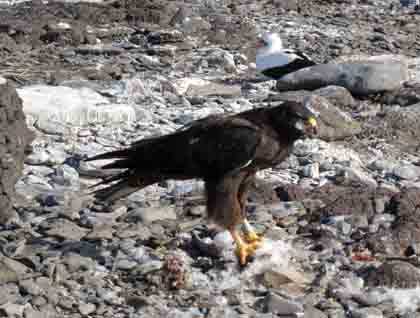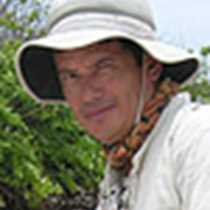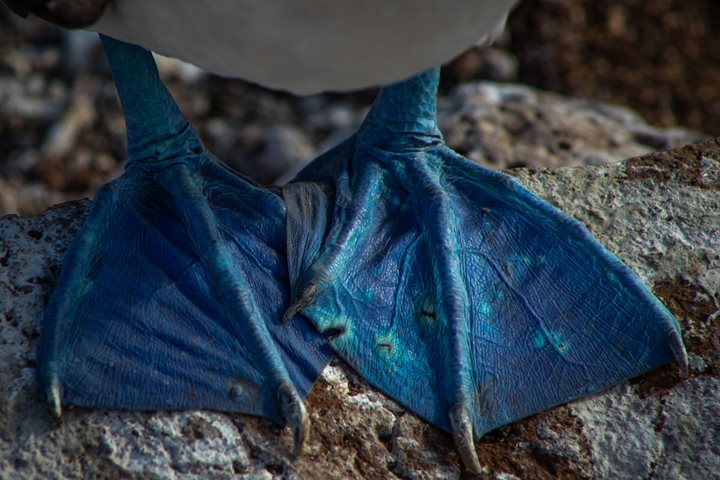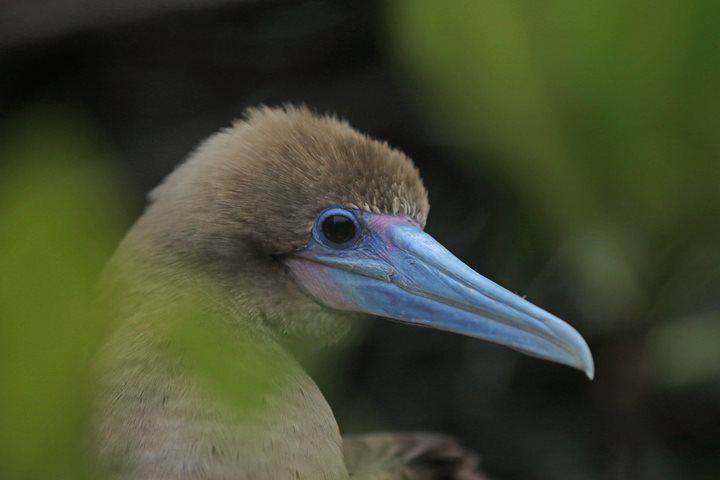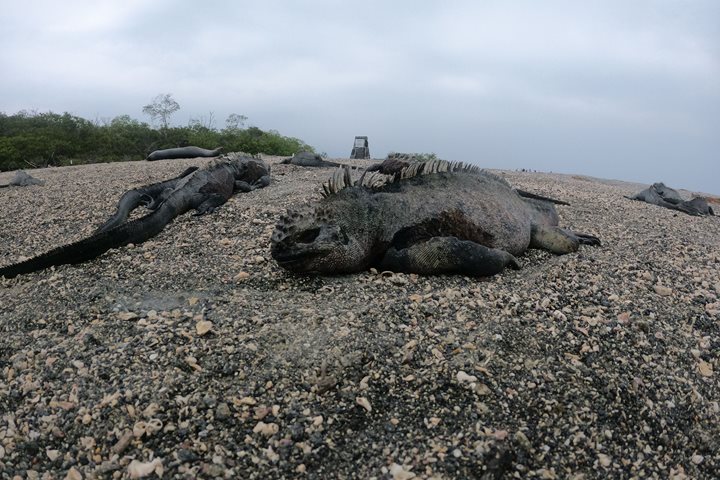Española, or Hood Island, is by far the oldest island in the archipelago. Its lack of highlands, its barren landscapes, and its lack of fresh water is the best evidence of a place that geologically is dying but on the other hand its exuberant fauna makes it one of the most beautiful.
Early in the morning our guests had the chance to kayak along the shore of the island. With the first beams of sun and a very calm ocean we started to explore, observing blue-footed boobies in a feeding frenzy, and some curious sea turtles and juvenile sea lions swimming around of us, while in the air frigate birds flew in circles observing the boobies, waiting the opportunity to steal some food.
After breakfast, we headed to Gardner Islet to snorkel and discovered a colorful underwater world. With very clear and warm water we started to swim observing a great amount of tropical fish foraging on the rocks of coral in a feeding frenzy. One of the best attractions was when we observed a group of sea lion taking turns to play with a bat fish, while close to them, another played with a balloon fish, whose body looked completely round and inflated of air, trying to float to reach the surface to escape from that inquisitve creature.
In the afternoon the National Geographic Islander dropped anchor in front of Punta Suarez. With sunny, hot weather we landed on the small dock, observing male marine iguanas whose colorful bodies looked green and red indicating to us the beginning of their mating season. There were many of them fighting, head bobbing and pushing each other, with their mouths bleeding. Walking inland the vegetation changed completely with dry trees and great amounts of small ground finches feeding on small seeds or insects while on the branches, Española mockingbirds sang and fluttered close to us, trying to call our attention or maybe begging for some water. The temperature decreased and wind blew, refreshing the environment and the sun moved to the west, producing the best light to photograph a Galapagos hawk that was feeding on a juvenile Nazca booby. We observed its powerful talons and its face covered with the fluffy feathers of the prey, while behind some adult Nazca boobies observed it nervously.
We finally arrived at the old dock, but the high tide flooded it completely. It was impossible to embark the Zodiacs, so therefore we had to use another higher and rocky place to take the Zodiacs back to the National Geographic Islander, our home during this beautiful week.

